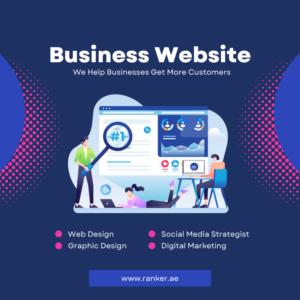Introduction
In today’s content-saturated digital world, standing out is no longer optional—it’s essential. One of the most impactful yet underused techniques for amplifying guest post success is visual storytelling. When done right, it not only captures attention but also drives higher engagement, shares, and conversions.
Why Visual Storytelling Matters in Guest Posting
The Human Brain Loves Visuals
Studies show that the brain processes images 60,000 times faster than text. This makes visual elements an ideal medium for communicating complex ideas quickly—especially in guest posts, where capturing interest in seconds is critical.
SEO Benefits of Visuals
Google’s algorithms increasingly favor content that engages users. Visuals help reduce bounce rates, increase time on page, and improve readability—all important ranking factors. Furthermore, optimized images and infographics often appear in Google Image Search, providing additional traffic streams.
Increased Shareability
Content with visuals gets up to 94% more views than text-only posts. When readers find an infographic, video, or chart useful, they’re more likely to share it across social platforms, expanding your content’s reach organically.
Whether you’re publishing on a high-authority blog or running a Best-In-Class Guest Post Service, integrating compelling visuals into your content strategy can be a game-changer. This article dives into how visual storytelling can enhance the performance of your guest posts, especially in competitive niches like fitness, marketing, and local services, such as Orange Theory Mountain View.
Core Elements of Effective Visual Storytelling in Guest Posts
Branded Imagery
Use consistent branding elements like color schemes, fonts, and logos across all visuals. This helps in establishing brand recognition, especially when guest posting on third-party websites.
Data Visualization
Data-heavy posts benefit from visual interpretation. Instead of listing numbers, present them in charts, graphs, or infographics. For example, a blog post comparing the performance of Orange Theory Mountain View with other fitness centers can use a bar graph to show monthly attendance rates.
Authentic Photography
Avoid generic stock photos. Use real images that relate to your topic. For instance, including behind-the-scenes shots of a business or a real photo from a workout session at Orange Theory makes the content feel genuine.
Story-Driven Infographics
A static image with bullet points is not a story. Craft infographics that have a clear beginning, middle, and end. This makes them more engaging and easier to remember.
How to Implement Visual Storytelling in Guest Posts
Choose the Right Format for the Story
Before creating visuals, identify the format that best tells your story:
Infographics for process explanations
Videos for testimonials or walkthroughs
GIFs or animations for attention-grabbing transitions
Interactive visuals like maps or sliders for dynamic experiences
Align Visuals with Written Content
Every visual should support the content rather than distract from it. Use visuals to:
Emphasize key points
Break up long sections of text
Guide readers through complex concepts
Optimize All Visual Elements for SEO
Don’t forget to:
Compress images for fast loading
Use descriptive filenames
Add alt text with your focus keyword: enhancing guest post performance through visual storytelling
Real-World Example: Fitness Industry & Orange Theory Mountain View
Telling a Visual Story Around Local Fitness Culture
Suppose you’re writing a guest post about fitness trends in Mountain View. Instead of only describing what makes Orange Theory unique, include:
A timeline infographic showing the evolution of fitness in Mountain View
A heat map of top-rated gyms, highlighting Orange Theory’s location
Before-and-after photos of real members (with permission)
A short interview video of a trainer sharing success stories
This approach makes the content more relatable, memorable, and shareable.
Cross-Linking for Better Engagement
Don’t forget to link back to your own or client’s services. For example, a CTA to explore more about SEO Optimization & Marketing in Dubai can work well in a section comparing international fitness marketing strategies.
How to Measure Success of Visual Storytelling
Use Analytics to Track Visual Engagement
Monitor key metrics such as:
Scroll depth (how far users go down the page)
Time spent on page
Click-through rates on interactive visuals
Social media shares of image content
A/B Testing
Test different types of visuals—infographics vs. videos, static images vs. animations—and see what resonates best with your audience.
Common Mistakes to Avoid
Overloading with Visuals
Too many visuals can clutter the layout and slow down loading times. Aim for balance—every visual should serve a clear purpose.
Using Low-Quality or Irrelevant Images
Poor quality visuals can undermine your credibility. Only include visuals that add value or context to the topic.
Ignoring Mobile Optimization
Make sure your visuals are responsive. A chart that looks perfect on desktop may break on mobile, affecting the user experience.
FAQ: Enhancing Guest Post Performance Through Visual Storytelling
What is visual storytelling in content marketing?
Visual storytelling uses images, videos, infographics, and design to convey a message more effectively than text alone.
How can visuals improve guest post SEO?
They improve user engagement, reduce bounce rates, and increase dwell time—all of which are positive SEO signals.
What types of visuals work best in guest posts?
Infographics, authentic photos, charts, and explainer videos tend to perform well.
How many visuals should I use in a 1500-word guest post?
Aim for one visual every 300–500 words, depending on the complexity of the topic.
Can I reuse visuals across different guest posts?
Yes, but always tailor them slightly for each publication to avoid duplicate content issues and enhance relevance.
Tell Better Stories, Get Better Results
Visual storytelling isn’t a luxury—it’s a necessity if you’re serious about enhancing guest post performance. In an era of content overload, visuals help your message cut through the noise, engage readers, and boost your SEO visibility. Whether you’re targeting a niche like fitness or a competitive digital marketing space, integrating visual storytelling can set your content apart.





